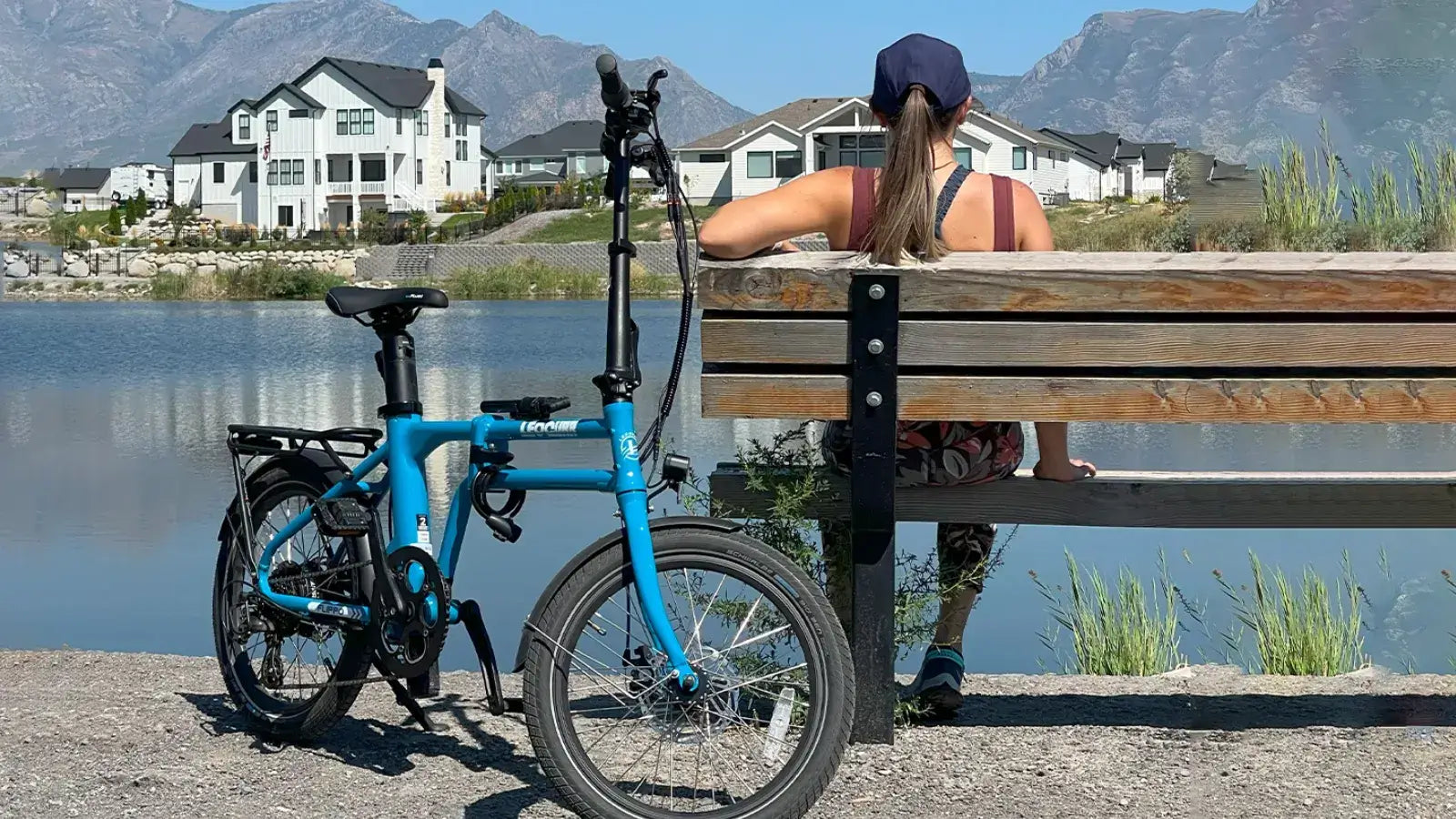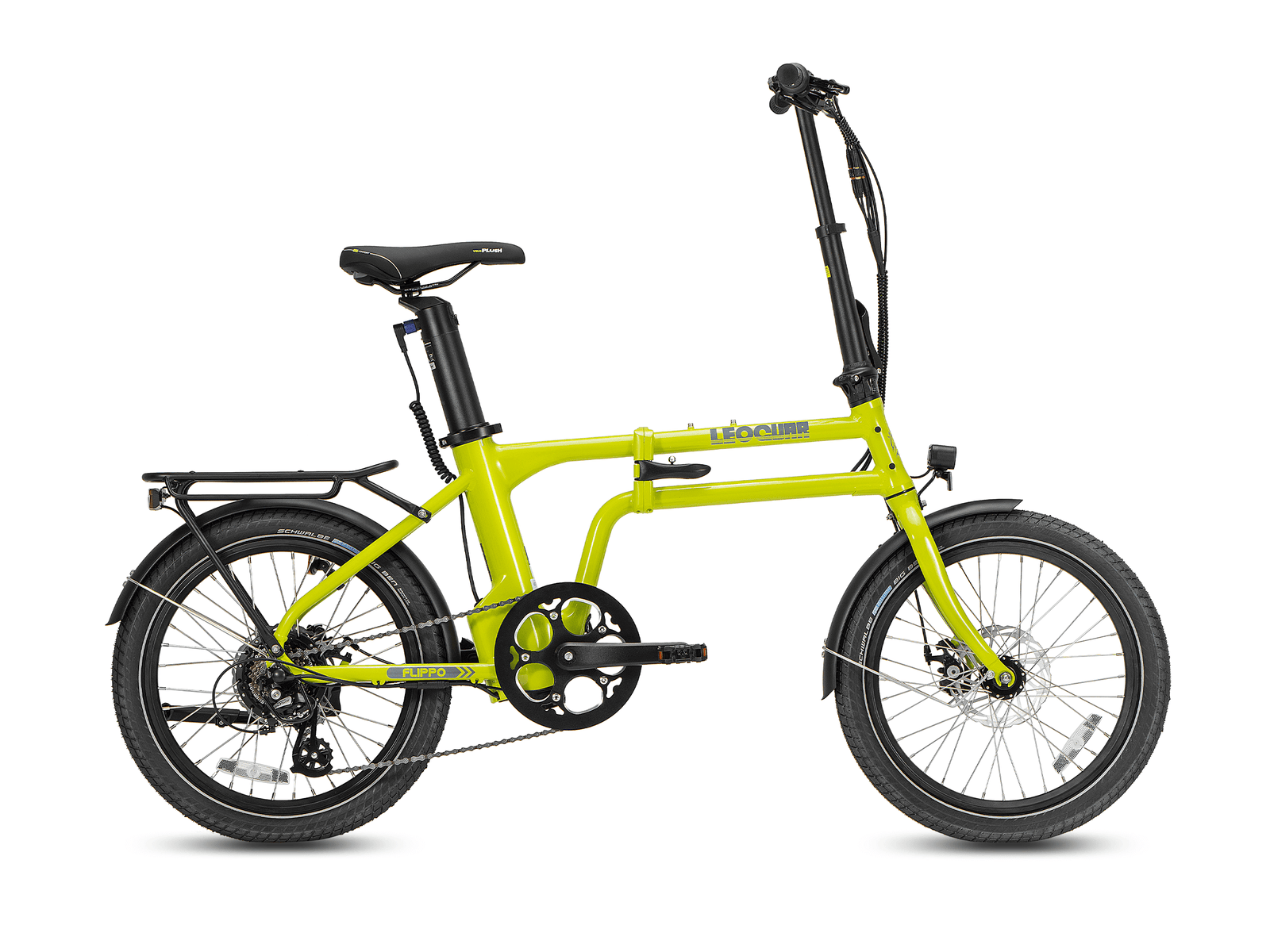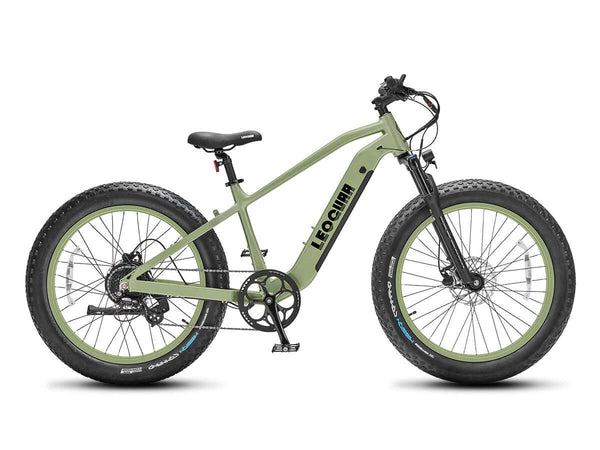
Top 7 Bicycle Locks and How to Lock Your Bike the Right Way
Your Bike Is Your Freedom
A bicycle is more than just a machine. It gives you freedom, transportation, and a tool for adventure. The feeling of losing it to theft is devastating. In many urban areas, a bike is stolen every few minutes, which can make any rider nervous. But that anxiety doesn't have to be your reality. By understanding and using a solid security plan, you can transform your bike from an easy target into a fortress on two wheels. This guide provides the expert knowledge you need. It covers both the essential hardware and the critical techniques to keep your ride safe.
The Pillars of Bike Security
Good bicycle security rests on two basic pillars. These are choosing the right bicycle locks and using the right locking method. A top-tier lock used improperly is nearly as useless as a cheap one. On the other hand, the best technique can't save you if the lock itself is weak. Mastering both is the only way to achieve true peace of mind.
Understanding Lock Types
Before you can choose the best lock, you must understand the landscape. The world of bicycle locks can be broken down into a few key categories, each with distinct advantages and disadvantages. Knowing these is the first step toward making an informed decision.
U-Locks (D-Locks)
Often considered the gold standard, eBike U-locks are rigid shackles of hardened steel. Their strength comes from their resistance to cutting, prying, and leverage attacks. The shape makes them a strong visual deterrent. This signals to a potential thief that this bike will be a difficult job.
Pros: High security, good deterrent.
Cons: Heavy, rigid shape limits what you can lock to.
Chain Locks
A heavy-duty chain lock combines thick, hardened steel links with a robust padlock. Their primary advantage is flexibility. You can snake a chain around awkwardly shaped objects like thick lampposts or wide railings. A U-lock could never fit around these objects.
Pros: High security, extremely flexible.
Cons: Typically the heaviest and most cumbersome option.
Folding Locks
Folding locks are a modern compromise between the security of a U-lock and the portability of a cable lock. They consist of steel bars connected by rivets, which fold down into a compact, easy-to-carry case. They offer more locking versatility than a U-lock but are generally not as robust.
Pros: Good portability, more flexible than a U-lock.
Cons: The rivets can be a potential weak point.
Cable & Frame Locks
These should be considered convenience items, not primary security. Cable locks are easily cut with simple bolt cutters. According to expert advice from sources like Sheldon Brown, they are best used as a secondary lock to secure a wheel or accessories, or for very brief stops in low-risk areas. Frame locks immobilize the rear wheel but don't secure the bike to an object. This means the bike can still be carried away.
Pros: Lightweight, convenient.
Cons: Low security, should not be a primary lock.
Lock Comparison at a Glance
| Lock Type | Security Level | Portability | Flexibility | Best Use Case |
|---|---|---|---|---|
| U-Lock | High | Moderate | Low | Securing the frame in high-risk areas. |
| Chain Lock | High | Low | High | Securing to large or awkward objects. |
| Folding Lock | Medium-High | High | Moderate | Commuting where portability is key. |
| Cable Lock | Low | High | High | Secondary lock for wheels/accessories. |
The 7 Best Bicycle Locks
We've tested, carried, and relied on countless bicycle locks over the years. This list represents our top picks based on security ratings, real-world usability, durability, and overall value.
How We Chose
Our selections are based on independent security ratings like Sold Secure. This is a British non-profit that tests locks against various attack methods. A Sold Secure Gold rating means a lock can withstand a dedicated 5-minute attack with a range of tools. Diamond is even tougher. We also consider independent tests against tools like angle grinders, which have become the thief's weapon of choice.

Lock 1: The Fortress
Product Example: Leoguar Ebike U-Lock with Combination Code
Type: U-Lock
Security: Heavy-duty zinc alloy + ABS, combination lock (no keys required)
Best For: Daily commuting, urban riders, and e-bike owners who want reliable theft protection without the hassle of carrying keys.
Our Take: This lock stands out for its convenience and balance between strength and usability. Instead of relying on a key, you can set your own combination code, making it quick to secure your bike in busy areas. The sturdy zinc alloy and ABS construction resists cutting attempts, while its weight (2.63 lbs) reassures you that it’s built for real-world durability. Unlike ultra-heavy locks that can feel like a burden, the Leoguar strikes a nice middle ground—tough enough to deter theft, but light enough to carry daily.
Real-World Scenario: Ideal for the commuter who rides to work or school and needs to lock up quickly at bike racks. Its universal fit ensures compatibility with a variety of e-bike frames, so you don’t have to wrestle with sizing issues. Perfect for those who want strong protection with a user-friendly, keyless design.
Lock 2: The Versatile Defender
Product Example: Hiplok GOLD
Type: Chain Lock
Security: Sold Secure Gold
Best For: Awkward posts, securing multiple bikes, wearable convenience.
Our Take: The ability to wear this 10mm chain lock around your waist is a game-changer. It distributes the weight comfortably, making it far more manageable than carrying a heavy chain in a backpack. The locking mechanism is smooth. The chain is long enough to easily secure your frame and a wheel to most bike racks and posts.
Real-World Scenario: Ideal for a delivery rider or someone visiting friends, who needs to lock up frequently to unpredictable objects.
Lock 3: The Grinder Stopper
Product Example: Hiplok D1000
Type: U-Lock
Security: Sold Secure Diamond (Motorcycle & Bicycle)
Best For: Ultimate security against all attacks, including angle grinders.
Our Take: This lock represents the next generation of security. While no lock is truly indestructible, the D1000's graphene composite material is designed to destroy angle grinder discs. This dramatically increases the time and noise required for a thief to cut through it. It's an investment, but it's the closest thing to total security you can buy.
Real-World Scenario: For the owner of a high-end e-bike or custom build who must park in a high-theft zone and needs maximum protection.
Lock 4: The Compact Engineer
Product Example: Abus Bordo Granit XPlus 6500
Type: Folding Lock
Security: Sold Secure Gold
Best For: Riders prioritizing portability without a major security compromise.
Our Take: Abus has perfected the folding lock. The action is smooth, and the included frame-mounted case is excellent. While a top-tier U-lock is technically stronger, the Bordo Granit's 5.5mm hardened steel bars offer serious resistance. It provides more locking options than a mini U-lock. It is also far easier to transport than a chain.
Real-World Scenario: A great choice for a road cyclist or long-distance commuter who needs strong security that fits neatly on their bike frame.
Lock 5: The Daily Commuter
Product Example: Kryptonite Evolution Mini-7 with 4' Cable
Type: U-Lock + Cable
Security: Sold Secure Gold
Best For: All-around daily use, great value.
Our Take: This is perhaps the most recommended lock for a reason. It hits the sweet spot of security, price, and usability. The 13mm shackle is strong enough for most urban environments. The included flex cable is perfect for looping through your front wheel. It's a complete, out-of-the-box solution for most cyclists.
Real-World Scenario: The student locking their bike on campus or the commuter making daily trips to the office in a medium-risk area.
Lock 6: The Secondary Safeguard
Product Example: Hiplok Z-LOK COMBO
Type: Armored Reusable Tie
Security: Low (Deterrent)
Best For: Securing accessories, helmet, or as a "cafe lock" for quick stops.
Our Take: This is not a primary lock. Think of it as a reinforced zip tie with a steel core. It's perfect for those moments when you run into a coffee shop and can still see your bike. It's also brilliant for securing your wheels to the frame or for locking your helmet to your bike. Use this in addition to your main lock.
Real-World Scenario: You're on a group ride and everyone stops for coffee. You use this to quickly secure your bike to a patio railing while you're sitting 10 feet away.
Lock 7: The Stationary Guardian
Product Example: Kryptonite New York Legend Chain 1515
Type: Chain Lock
Security: Sold Secure Diamond (Motorcycle)
Best For: At-home garage security or a dedicated office parking spot.
Our Take: This lock is not meant to be portable. It's an absolute beast, with a massive 15mm chain and an equally imposing padlock. You leave this lock at your most frequent, high-risk location. It's overkill for carrying, but it's the definitive solution for securing your bike at home or work.
Real-World Scenario: You keep this locked to a ground anchor in your garage or to a secure pipe in your office's bike room, providing ultimate security day after day.
How to Lock Your Bike
Owning a great lock is only half the battle. A shocking number of stolen bikes were secured with good locks used incorrectly. Mastering the proper technique is a free, instant security upgrade.
The Golden Rules of Locking
Rule 1: Always lock your frame. It's the most valuable part of your bike.
Rule 2: Lock to an immovable object. Shake the rack or pole to be sure.
Rule 3: Make the lock difficult to access. Keep it off the ground.
Rule 4: Fill the space inside your lock. Less empty space means less room for a thief's tools.
The Best Locking Method
This step-by-step guide ensures you secure the most critical parts of your bike.
Step 1: Choose Your Spot. As police departments advise, look for a location that is well-lit and has high foot traffic. A solid, dedicated bike rack cemented into the ground is best. Avoid scaffolding, wooden railings, or signposts that can be easily unbolted or lifted out of the ground.
Step 2: Position Your Bike. Get your bike frame as close as possible to the object you're locking to. This helps you follow Rule 4.
Step 3: The Primary Lock. We recommend the Sheldon Brown Method. Pass your U-lock around the rear wheel, inside the rear triangle of the frame, and then around the secure object. This single action secures a wheel and the frame, the two most expensive components. It also leaves minimal space for a thief to work.
Step 4: Secure Your Front Wheel. You have two good options.
Option A (Two Locks): This is the most secure method. Use a second lock (another U-lock or a high-quality chain) to secure the front wheel to the frame and/or the rack.
Option B (Lock + Cable): Loop a secondary cable through your front wheel and attach both ends to your primary U-lock before you lock it. This is less secure than two dedicated locks but far better than leaving the wheel unsecured.
Common Locking Mistakes
- Don't lock only the wheel. A thief will simply remove the wheel and walk away with the rest of your bike.
- Don't leave lots of empty space in the U-lock. This invites leverage attacks.
- Don't let the lock rest on the ground. This allows a thief to use the ground for leverage to smash or break the lock.
- Don't lock to "sucker poles" or objects that can be easily cut, dismantled, or lifted.
Beyond the Lock: Layered Security
The most secure bike is an unattractive target. True security is about creating layers of protection that make a thief decide to move on to an easier mark.
Make Your Bike Unattractive
- Component Security: Quick-release levers on wheels and seatposts are a gift to thieves. Replace them with Allen bolts or, for higher security, invest in specialized locking skewers that require a unique key to open.
- Disguise the Bling: For a daily commuter, a bike that looks a bit worn can be a feature. A few strategic pieces of electrical tape over brand names can make a valuable bike look less appealing. This deters an opportunistic thief looking for a quick sale.
Document Everything
- Record Your Serial Number: This is the single most important piece of information for recovery. It's usually stamped under the bottom bracket. Take a photo of it and store it in the cloud.
- Register Your Bike: Use services like Bike Index or local police registration programs. If your bike is recovered, this is the best way to prove it's yours.
- Take Photos: Have clear photos of your bike from multiple angles. Include any unique scratches or components.

Lock It Right, Ride with Confidence
Protecting your bike comes down to a simple formula: the right lock plus the right method. By choosing a lock that fits your risk level and budget, and by consistently using a secure locking technique, you drastically reduce your chances of becoming a victim of theft. Now you have the knowledge. Go forth, lock it right, and enjoy the ride with the confidence you deserve.
Frequently Asked Questions
1. Q: What type of bicycle lock offers the best security?
A: U-locks with Sold Secure Diamond ratings offer the highest security. They resist cutting, prying, and leverage attacks better than other lock types. For ultimate protection, consider locks like the Hiplok D1000 that are designed to resist angle grinder attacks.
2. Q: How should I lock my bike to prevent theft?
A: Use the Sheldon Brown Method: pass your U-lock around the rear wheel, inside the rear triangle of the frame, and around a secure object. Always secure your front wheel with a second lock or cable, and make sure to fill the space inside your lock to prevent leverage attacks.
3. Q: Are cable locks safe for securing bicycles?
A: Cable locks should only be used as secondary locks or for very brief stops in low-risk areas. They can be easily cut with bolt cutters and don't provide adequate security as a primary lock. Use them to secure wheels or accessories alongside a stronger U-lock or chain lock.
4. Q: What should I look for when choosing where to lock my bike?
A: Choose well-lit areas with high foot traffic and solid, immovable objects like dedicated bike racks cemented into the ground. Avoid scaffolding, wooden railings, or signposts that can be easily cut, unbolted, or lifted out of the ground.
5. Q: How can I make my bike less attractive to thieves?
A: Replace quick-release levers with Allen bolts or locking skewers, use electrical tape to cover brand names on expensive bikes, and consider making your bike look slightly worn. Document your bike's serial number and register it with services like Bike Index for recovery purposes.












































Leave a comment